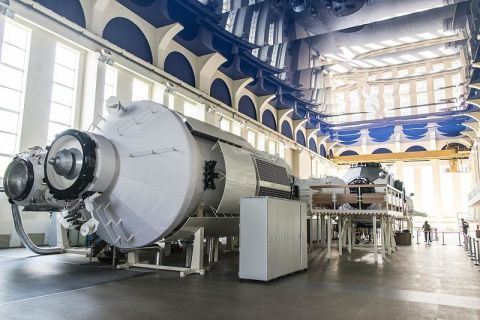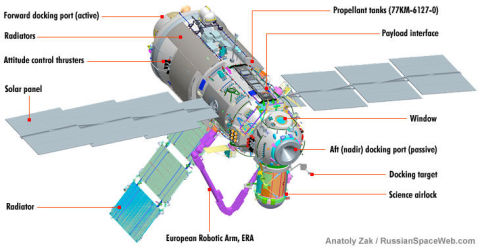After years of delays, the Russian component of the International Space Station—which Roscosmos originally planned to deploy in 2007—finally looked like it was ready for launch. However another problem with the Multi-Purpose Laboratory Module (MLM) now threatens to derail a project that's already been plagued with them. The same severe contamination that's kept the MLM on the ground since 2013 has returned, Russian experts involved in the project told Popular Mechanics.
Dubbed Nauka (Russian for "science"), the MLM was designed to be a centerpiece of the Russian part of the ISS as well as the core of the post-ISS Russian station. Now that an ambitious future is once again under threat.
A TEN-YEAR-OLD DILEMMA
Launched in November 1998, the Zarya, or "Dawn," was the very first ISS module, providing power and propulsion during the international outpost's original construction. This mission was so critical that Roscosmos began building a replacement in case of a catastrophic mishap. The Zarya launch succeeded, and six years later the Russian space agency decided to transform the backup module into the MLM, saving costs on creating an entirely new, custom-built laboratory. This retrofitted module eventually became known as the Nauka.
As its originally 2007 launch date came and went, more and more delays pushed back the MLM's launch. Then, in 2013, engineers discovered a leaking fueling valve as well as contamination in the propulsion system. At the time, reports said repairs and cleanup would take nearly 10 months.
Those months stretched into years. During the last four years, engineers have been working diligently replacing a jungle of pipelines, valves, and thrusters—part of Nauka's sophisticated propulsion system—in an effort to get rid of the sawdust contamination introduced during botched upgrades. Because the spacecraft has stayed earthbound much longer than intended, parts of Nauka have also slipped out of warranty.
Fighting off political and logistical concerns surrounding the project—as well suggestions that they ground the MLM entirely until it can serve as the first module of Russia's own space station—the tedious cleanup and repair effort entered its final phase this year, and the module finally appeared on track for launch at the end of this year or, at the very latest, the first half of 2018.
Then things went from bad to worse.
MORE FIXES, MORE HEADACHES
In the past few weeks, engineers found the same contamination they've been fighting for years inside the module's propellant tanks. The repair team tried to wash off these contaminants, but so far all efforts to cleanse the vessels have failed.
To make matters worse, these particular tanks, originally designed in the early 90s, are no longer in production and simply can't be replaced. Because of these tanks' unique design, fitted neatly onto the module like the chamber of a revolver, no modern tanks will work without damaging the spacecraft.
Nauka engineers did catch one lucky break. Roscosmos originally designed the vessel with a second set of shorter tanks. But to make room on the exterior of the converted module for the attachment of a European-built robotic arm and various scientific instruments, engineers removed the them. Now, these remaining (hopefully non-contaminated) tanks could be the only chance to get this long beleaguered spacecraft attached to the ISS.






